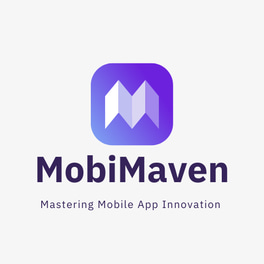Choosing the Right Mobile Application Platform: A 2025 Guide for Seamless App Development
Struggling to pick a mobile app platform? This 2025 guide compares native, cross-platform & low-code solutions to streamline your app development. Learn more!
Sujoy
4/30/20253 min read


In an era where 82% of consumers abandon apps due to poor performance (TechCrunch 2024), selecting the right mobile application platform isn’t just a technical decision—it’s a business-critical one. As AI-driven features, 5G optimization, and low-code tools redefine app development in 2025, the platform you choose will determine your app’s scalability, user experience, and ROI.
Whether you’re a startup racing to launch an MVP or an enterprise building a future-proof solution, the stakes have never been higher. Native, cross-platform, hybrid, or low-code? Each mobile application platform offers unique advantages, but one misstep could mean wasted budgets, sluggish performance, or lost market share.
This guide cuts through the noise, comparing 2025’s top platforms with actionable insights on costs, scalability, and emerging tech. By the end, you’ll know exactly how to align your goals with the perfect foundation—ensuring your app thrives in the competitive mobile-first landscape.
Why Your Mobile App Platform Choice Matters in 2025
The mobile app market is projected to hit $935 billion by 2025 (Statista), but success starts with choosing the right foundation. A poorly selected platform can lead to:
Bloated development costs
Slow performance
Limited scalability
Frustrating user experiences
With AI-driven tools, 5G optimization, and low-code platforms dominating 2025, this guide breaks down how to align your business goals with the best mobile application platform for your needs.
Key Factors to Evaluate Mobile App Platforms
Before diving into platform types, ask:
What’s Your App’s Purpose?
Consumer-facing (e.g., social media, e-commerce)
Enterprise/B2B (e.g., internal tools, CRM)
Hybrid (e.g., IoT-connected apps)
What’s Your Budget?
Low-code platforms (e.g., Flutter Flow) reduce costs by 40-60%.
Native development (Swift, Kotlin) offers premium performance at a higher price.
Who’s Your Audience?
iOS vs. Android dominance varies by region (e.g., iOS leads in the U.S., Android in Asia).
Do You Need Future Scalability?
Will your app integrate AI, AR, or blockchain later?
Top Mobile App Platforms in 2025: Pros, Cons & Use Cases
1. Native Platforms (iOS & Android)
Best For: High-performance apps (e.g., gaming, video streaming).
Tools: Swift (iOS), Kotlin (Android).
Pros:
Unmatched speed and UX.
Full access to device hardware (cameras, sensors).
Cons:
Double the cost (separate iOS/Android codebases).
Longer development time.
2. Cross-Platform Frameworks (Flutter, React Native)
Best For: Startups and SMEs needing cost-effective MVP launches.
2025 Trends:
Flutter dominates with 65% adoption (Google Trends).
React Native integrates AI plugins for predictive features.
Pros:
Single codebase for iOS + Android.
Hot-reload speeds up iterations.
Cons:
Slightly slower than native apps.
Limited access to niche device APIs.
3. Low-Code/No-Code Platforms (Bubble, Adalo)
Best For: Rapid prototyping or simple apps (e.g., event apps, basic CRMs).
2025 Innovation:
AI-generated UI components.
Pre-built templates for AR/VR.
Pros:
Launch in weeks, not months.
No coding expertise required.
Cons:
Limited customization.
Scalability challenges for complex apps.
4. Hybrid Platforms (Ionic, Cordova)
Best For: Web app conversions or lightweight mobile solutions.
Pros:
Reuse web dev skills (HTML, CSS).
Affordable for simple apps.
Cons:
Performance lags behind native/cross-platform.
Poor offline functionality.
Future-Proofing Your App: 3 Must-Have Features for 2025
AI-Powered Personalization
Platforms like Flutter now support TensorFlow Lite for in-app AI.
5G Optimization
Ensure your platform supports ultra-low latency (critical for AR/VR apps).
PWAs (Progressive Web Apps)
Blend mobile and web apps for instant access (e.g., Twitter Lite).
FAQs: Mobile App Platforms in 2025
Q: Is cross-platform better than native in 2025?
A: For most SMEs, yes—Flutter/React Native close the performance gap while saving costs.
Q: Can low-code platforms handle complex apps?
A: Not yet. Use them for prototypes or simple apps; switch to native/cross-platform for scaling.
Q: How important is 5G optimization?
A: Critical for apps using AR, live streaming, or IoT connectivity.
Conclusion: Start Building Smarter in 2025
The “best” mobile application platform depends on your budget, audience, and long-term vision. While cross-platform frameworks like Flutter lead for flexibility, native development remains king for high-stakes apps. Test platforms with a pilot project, and always prioritize user experience over trends.
Ready to Build Your 2025-Ready Mobile App? Partner with Experts
If you’re inspired to launch a seamless, scalable app but need technical firepower, Equitysoft—a top-rated Fiverr agency with 9+ years and 210+ successful projects—can bring your vision to life.
Why Equitysoft? ✅
🚀 Flutter & Cross-Platform Specialists: From social media apps to AI-driven fintech solutions, their team delivers pixel-perfect apps for Android, iOS, and hybrid platforms.
💡 Startup-First Approach: They’ve helped 50+ startups scale with tailored solutions like taxi booking apps, food delivery platforms, and FlutterFlow prototypes.
🔧 Free 3-Month Support: Post-launch stability matters—get complimentary maintenance and technical assistance to ensure your app thrives.
⏱️ On-Time Delivery: A 50+ member team guarantees regular updates and deadlines met, every time.
Their Stack:
Frontend: Flutter, React Native
Backend: Node.js, Firebase, Laravel
Design: Figma, Photoshop (UI/UX-focused)
Pricing: Transparent quotes start at $1,000, with flexible scaling for complex projects.
👉 Before You Order: Contact Equitysoft on Fiverr to discuss timelines, costs, and 2025-ready features like 5G optimization or AI integration.
“Don’t just build an app—build a competitive edge.”
